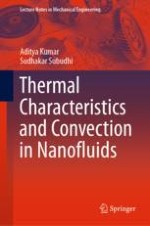2021 | OriginalPaper | Chapter
5. Stability of Nanofluids
Authors : Aditya Kumar, Sudhakar Subudhi
Published in: Thermal Characteristics and Convection in Nanofluids
Publisher: Springer Singapore
Activate our intelligent search to find suitable subject content or patents.
Select sections of text to find matching patents with Artificial Intelligence. powered by
Select sections of text to find additional relevant content using AI-assisted search. powered by
